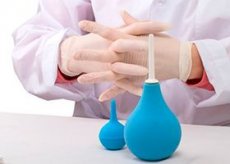Medical expert of the article
New publications
Paraproctitis - Symptoms
Last reviewed: 04.07.2025

All iLive content is medically reviewed or fact checked to ensure as much factual accuracy as possible.
We have strict sourcing guidelines and only link to reputable media sites, academic research institutions and, whenever possible, medically peer reviewed studies. Note that the numbers in parentheses ([1], [2], etc.) are clickable links to these studies.
If you feel that any of our content is inaccurate, out-of-date, or otherwise questionable, please select it and press Ctrl + Enter.

Symptoms of acute paraproctitis
The disease has a short (no more than 3 days) prodromal period, during which weakness, headache, and general malaise may be observed. Then typical symptoms of paraproctitis appear: chills, fever, pain in the perineum. The severity of clinical symptoms is determined by the reactivity of the body, the type of bacteria that caused the inflammatory process, and which of the fascial-cellular spaces is affected. When the cellular spaces of the small pelvis are affected by phlegmon, general symptoms caused by intoxication prevail in the clinical picture. As the process is delimited and an abscess is formed, the intensity of the pain increases, it becomes pulsating. Depending on the intensity of the inflammatory process, this period lasts from 2 to 10 days. Then, if surgical treatment is not performed, the inflammation spreads to adjacent cellular spaces of the pelvis, the abscess is emptied into the rectum or onto the skin of the perineum. After opening the abscess, 3 outcomes are possible:
- recovery;
- formation of a fistula of the rectum (chronic paraproctitis);
- development of recurrent paraproctitis with more or less frequent exacerbations of the inflammatory process.
Chronic paraproctitis is a consequence of acute inflammation. This is a pararectal fistula formed after spontaneous opening of an abscess or its opening by a surgical method. The internal opening of the fistula is a defect in the rectum. The external opening is located on the skin of the perineum. In some cases, several fistula tracts and several external openings of the fistulas can be observed.
Symptoms of chronic paraproctitis
Symptoms of this form of paraproctitis are a consequence of acute. In cases where the internal opening in the rectum is not eliminated upon opening the abscess, a fistula of the rectum (chronic paraproctitis) may subsequently form. A fistula of the rectum is characterized by the presence of one or more external openings on the skin of the perineum near the anus. Pus, sometimes feces and gases may be released from the external openings of the fistula tract.
The general condition of patients with chronic paraproctitis "suffers" little. Pain is not the main symptom of the disease. It appears only during an exacerbation of the process. The nature and amount of discharge from the fistula depends on the activity of the inflammatory process. It should be noted that while the fistula is functioning (its external opening is open), relapses of acute paraproctitis occur rarely. At the same time, there is a special form of the so-called acutely recurrent paraproctitis. With it, the pinpoint internal opening in the rectum can be temporarily closed by a soft scar, and the fistula stops functioning. If the scar is damaged, paraproctitis recurs.
Depending on the location of the fistula tract in relation to the sphincter muscle, there are 4 types of fistulas:
- subcutaneous-submucous, or intrasphincteric - the fistula is located under the mucous membrane or in the subcutaneous tissue inside the sphincter muscle;
- transphincteric - the fistula is directed from the intestine to the outside through the thickness of the sphincter;
- complex, or extrasphincteric - the fistula tract goes around the sphincter from the outside. With this type of fistula, the internal opening is usually located at the upper pole of the sphincter. Complex fistulas can be horseshoe-shaped. In these cases, the internal opening of the fistula, located along the back wall of the rectum, gives rise to two fistula tracts that open on the skin with two openings on either side of the anus;
- Incomplete fistulas have only an internal opening in the rectum and do not have an external opening on the perineum. The source of their formation is often an anal fissure.


 [
[